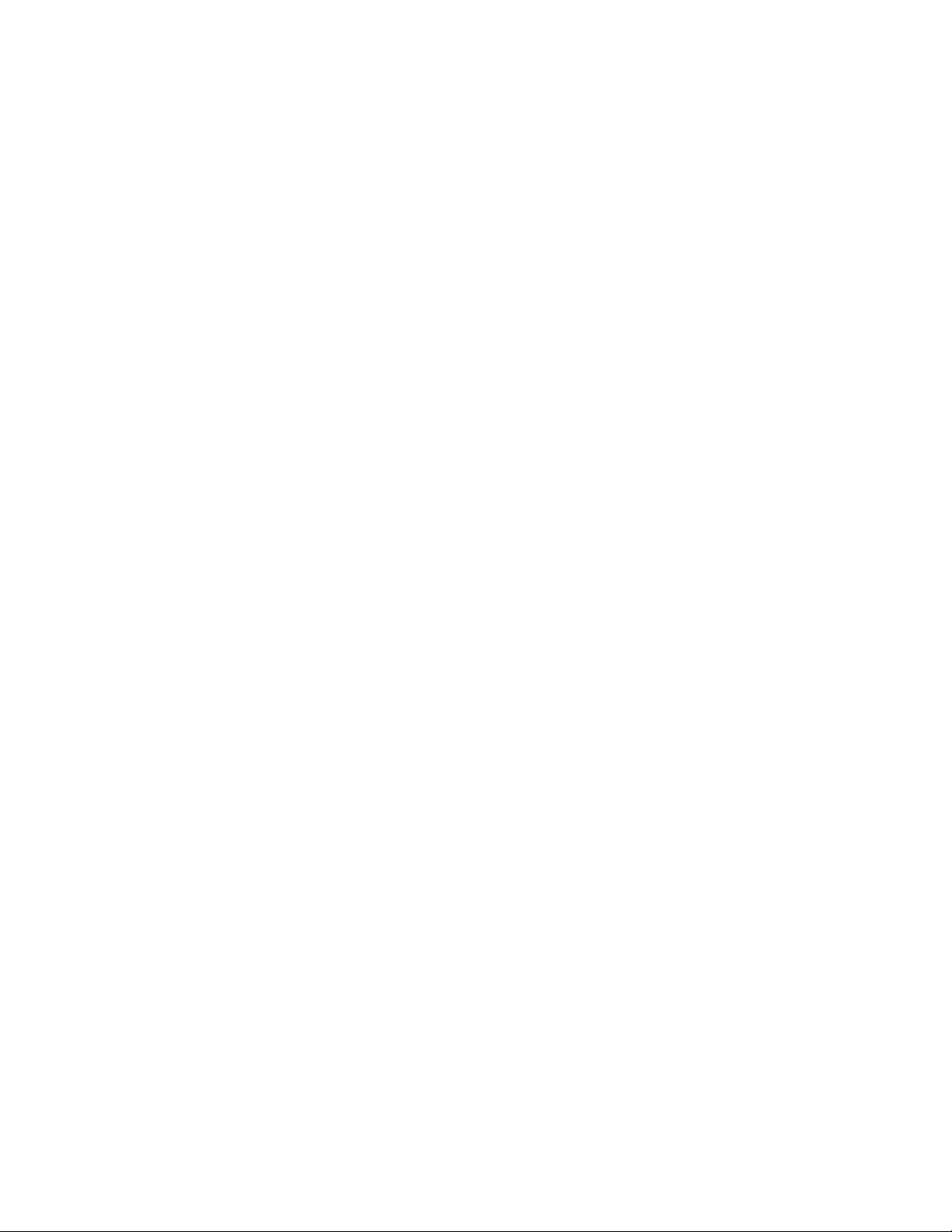
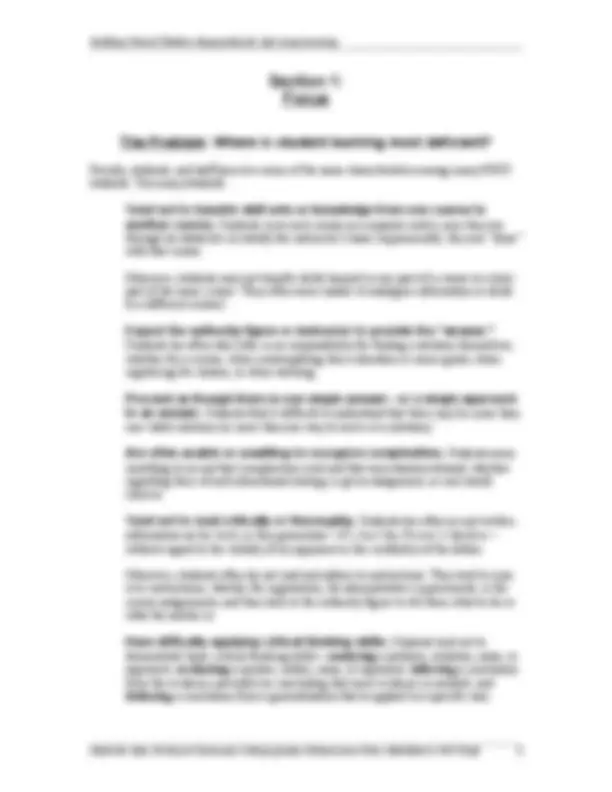
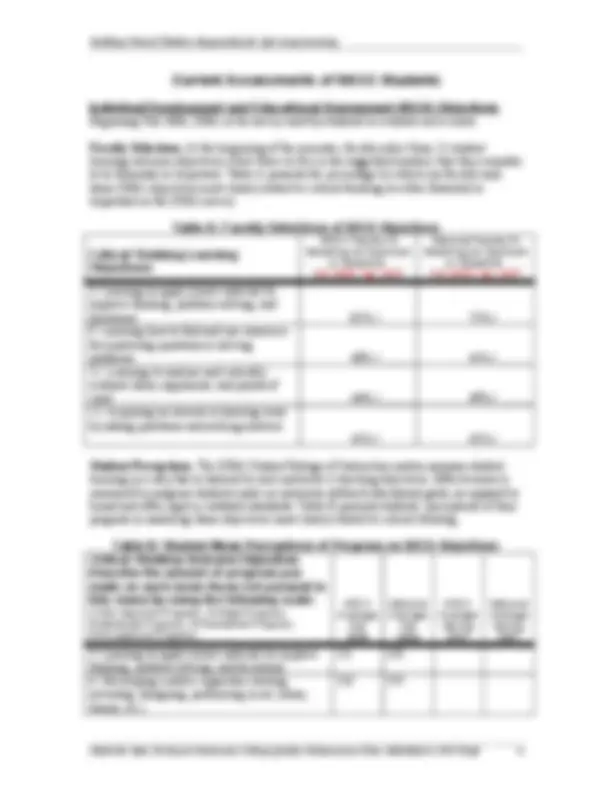
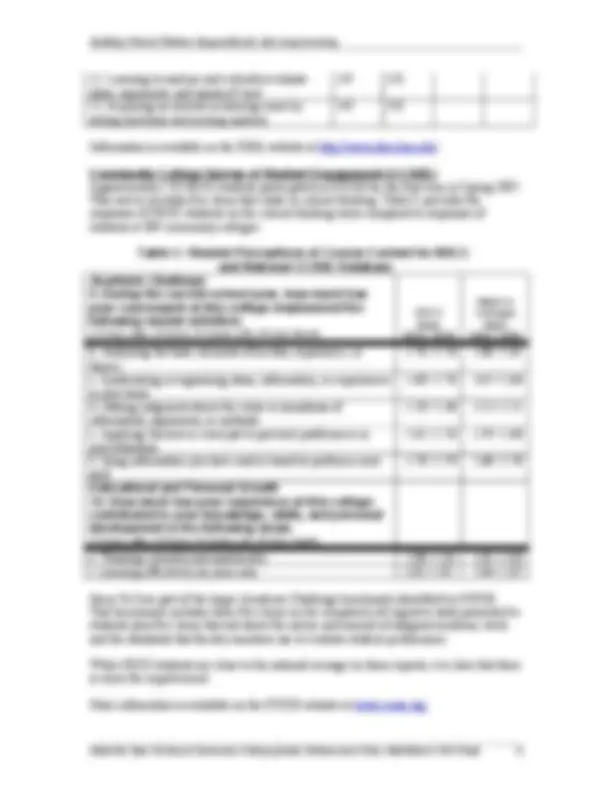
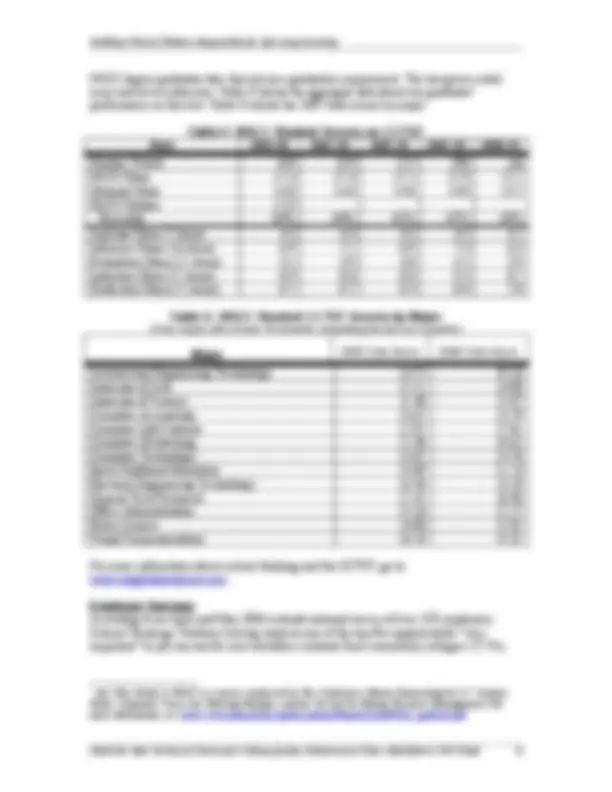
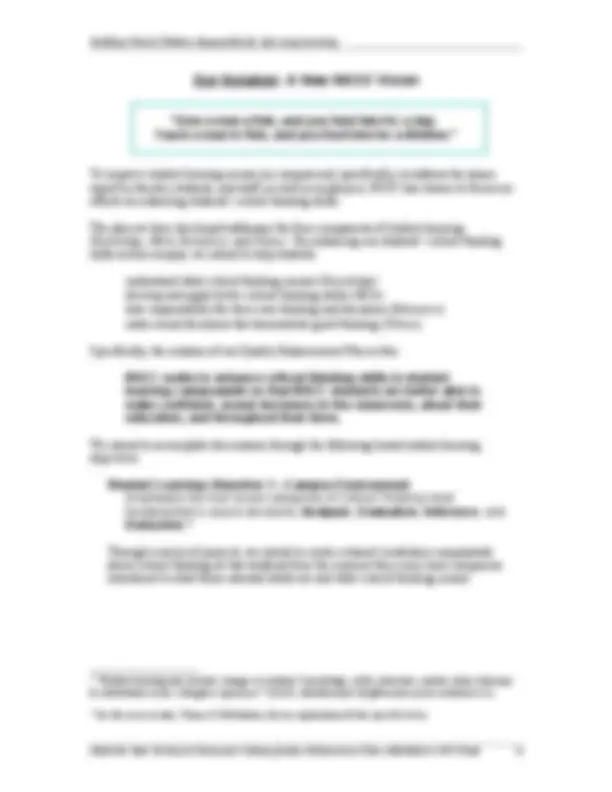
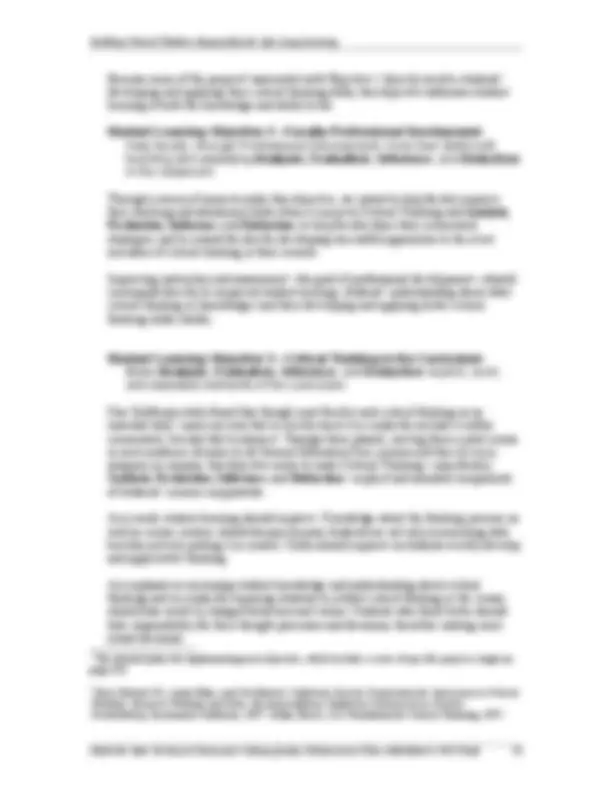
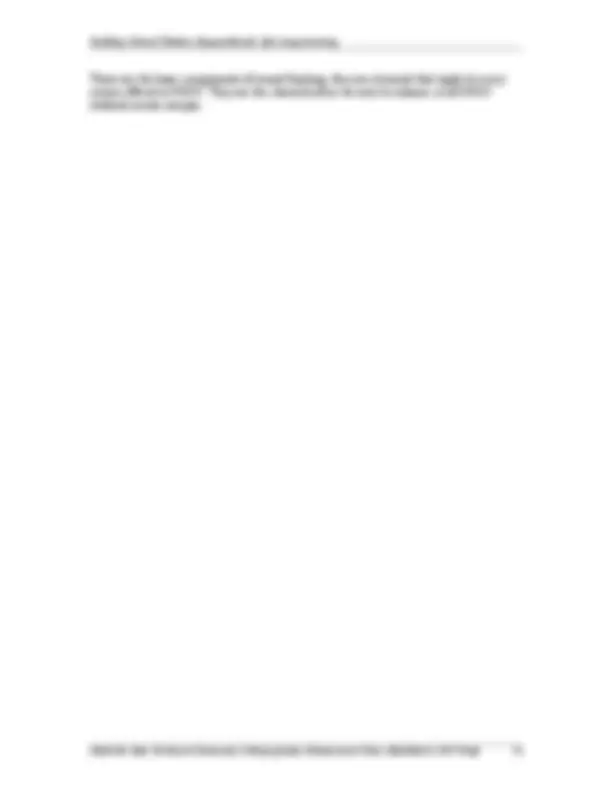
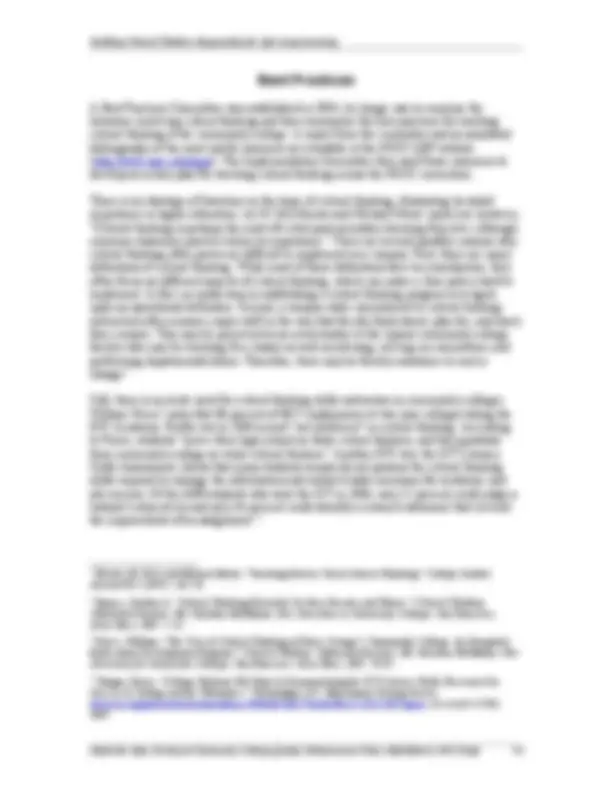
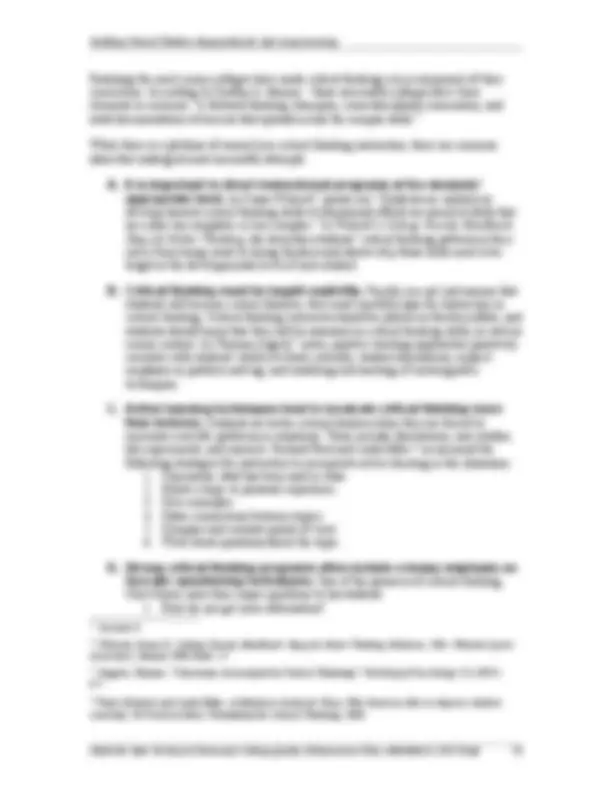
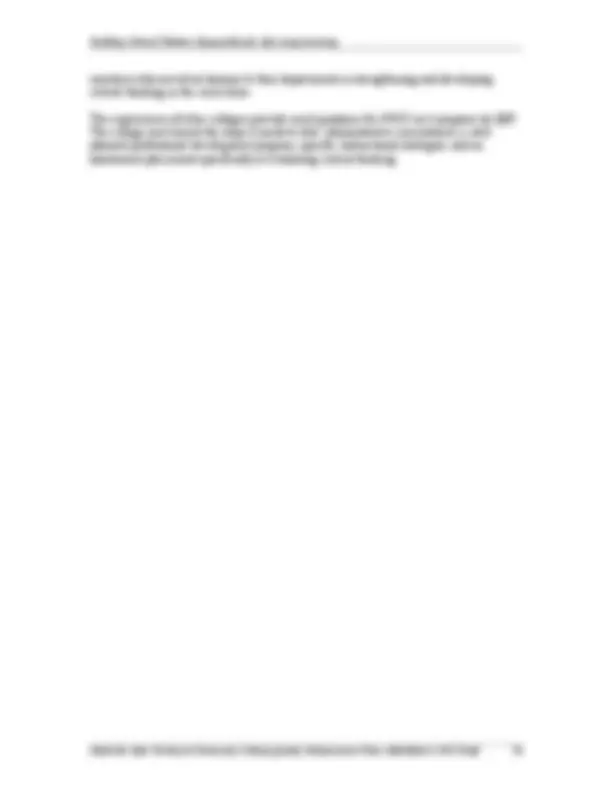
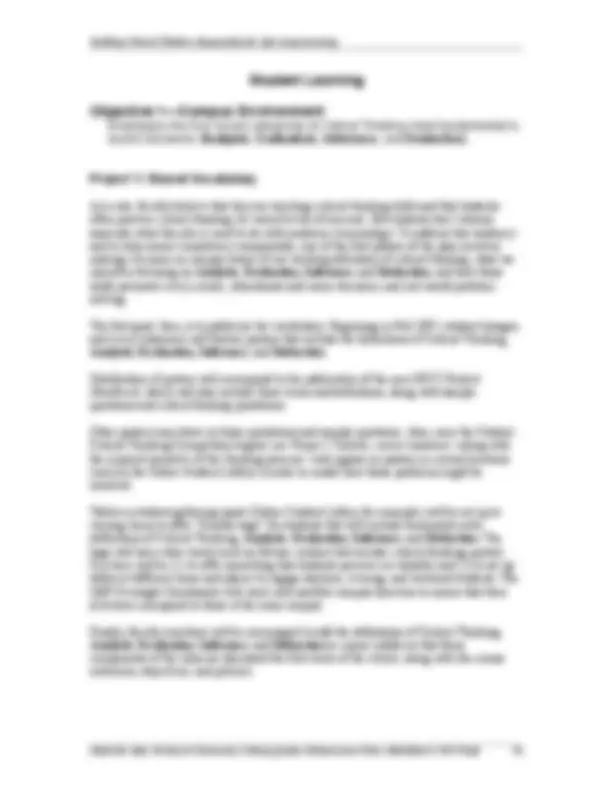
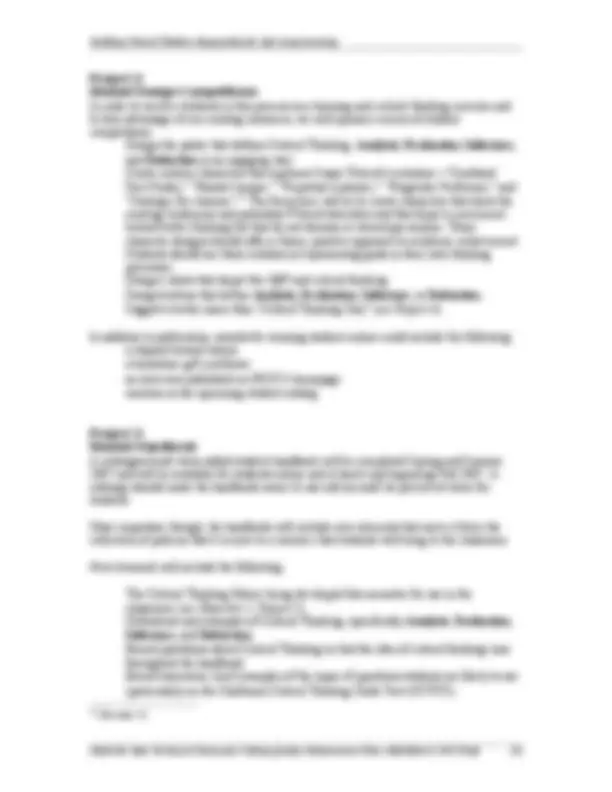
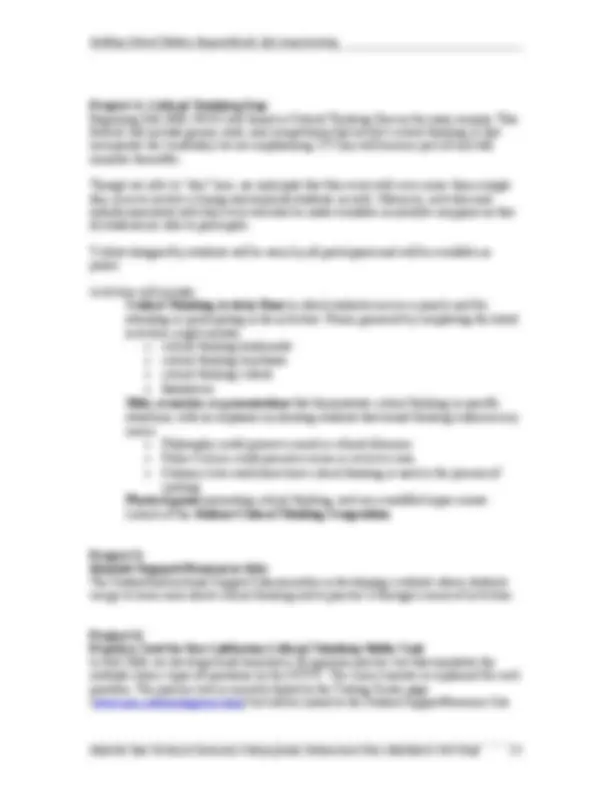
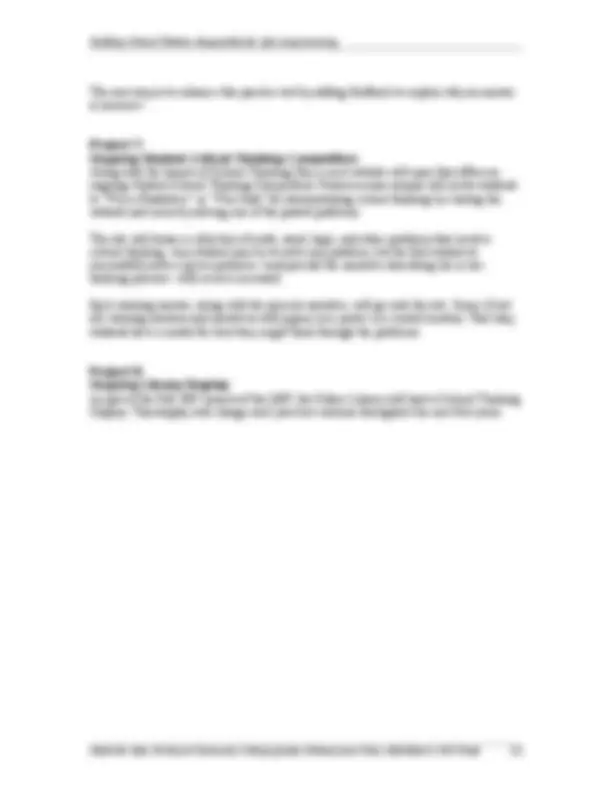
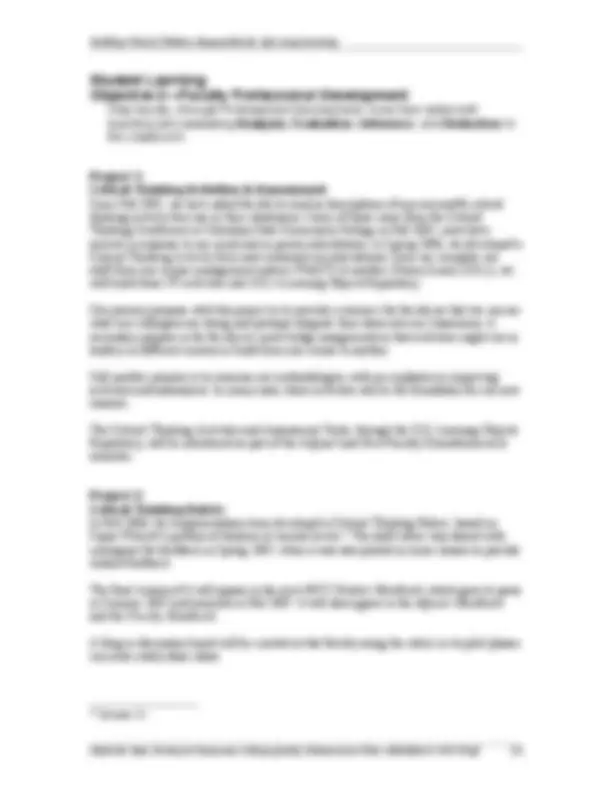
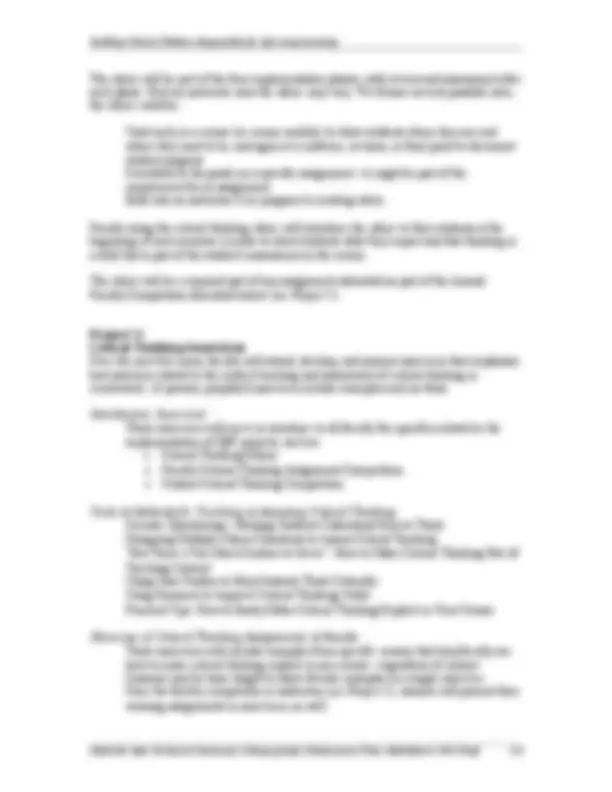
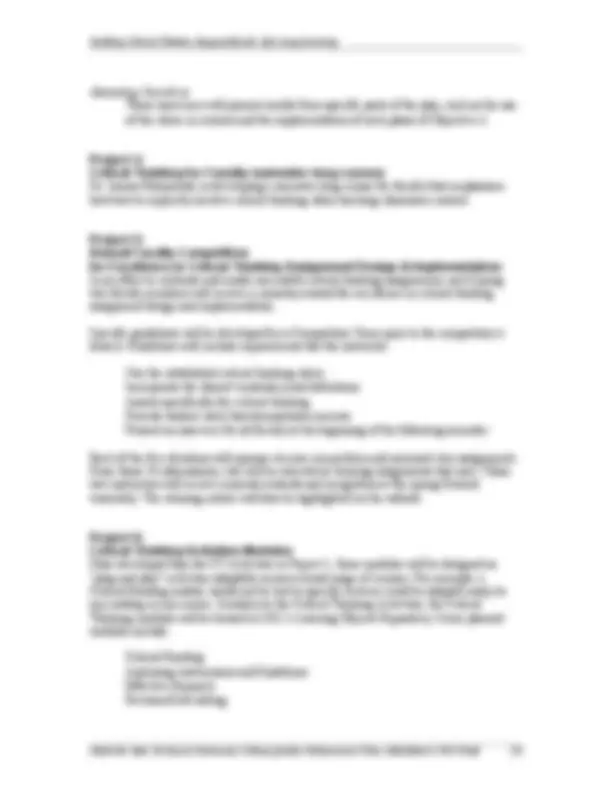
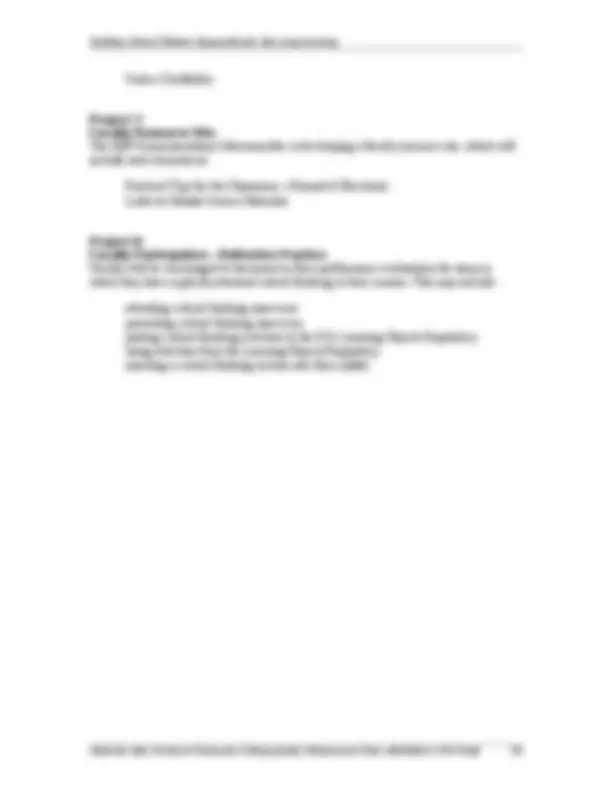
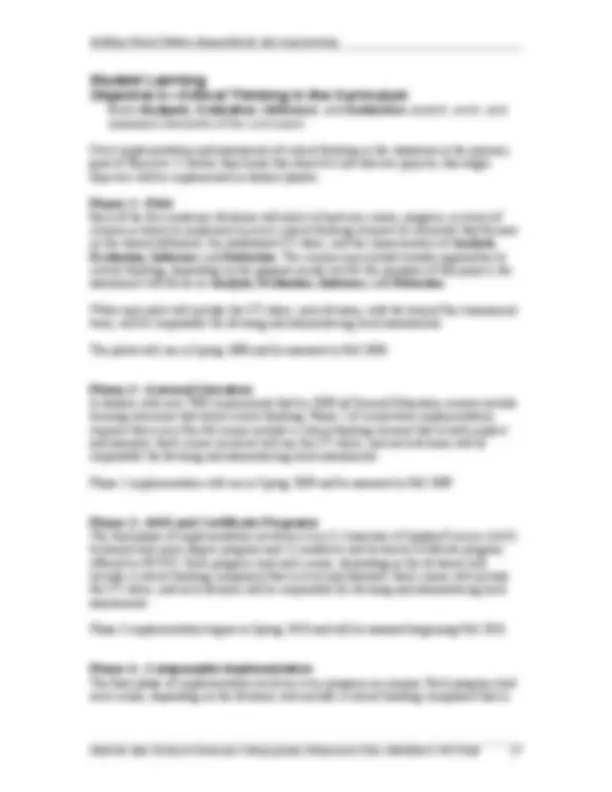
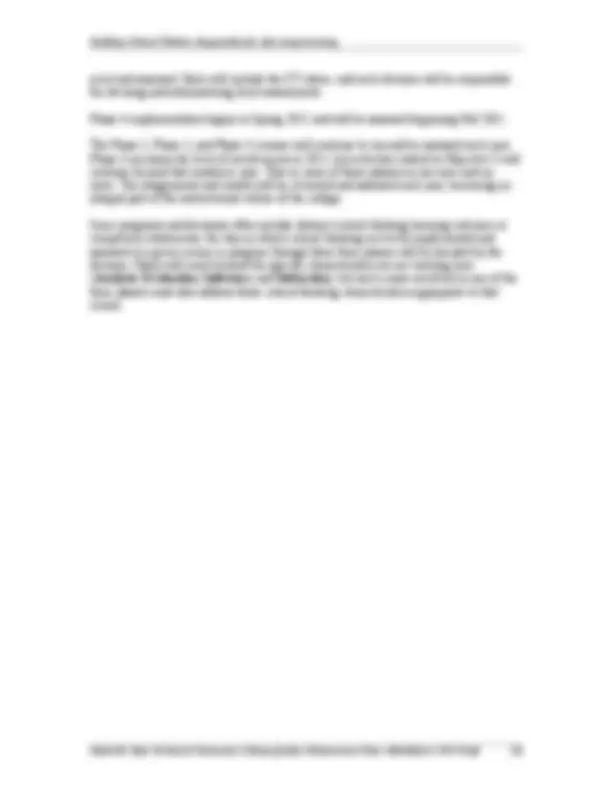
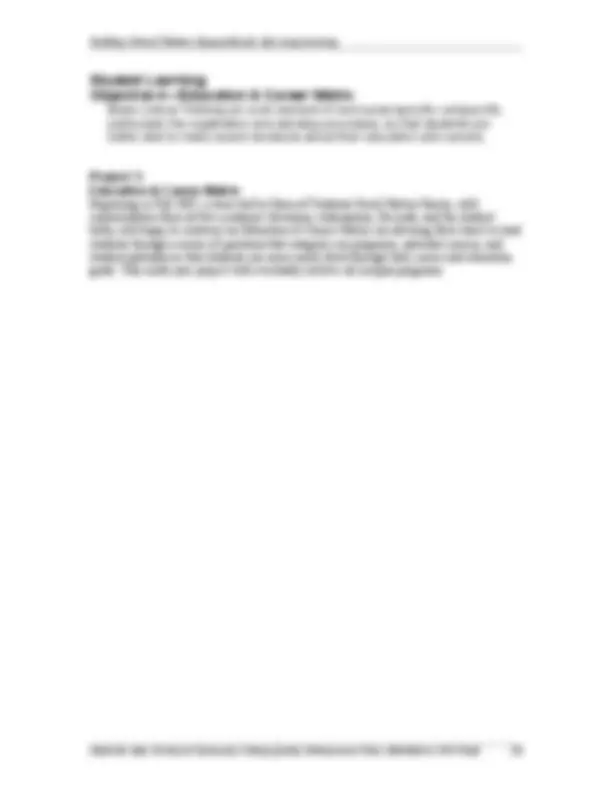
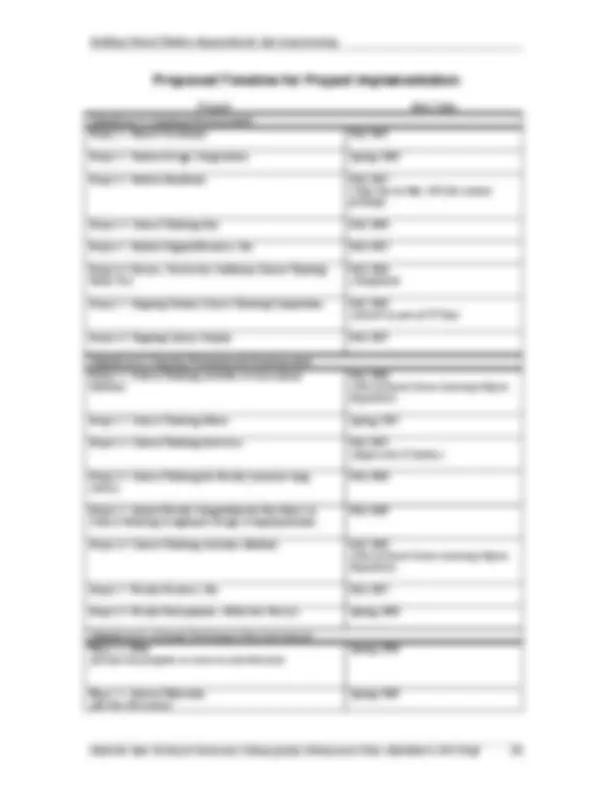
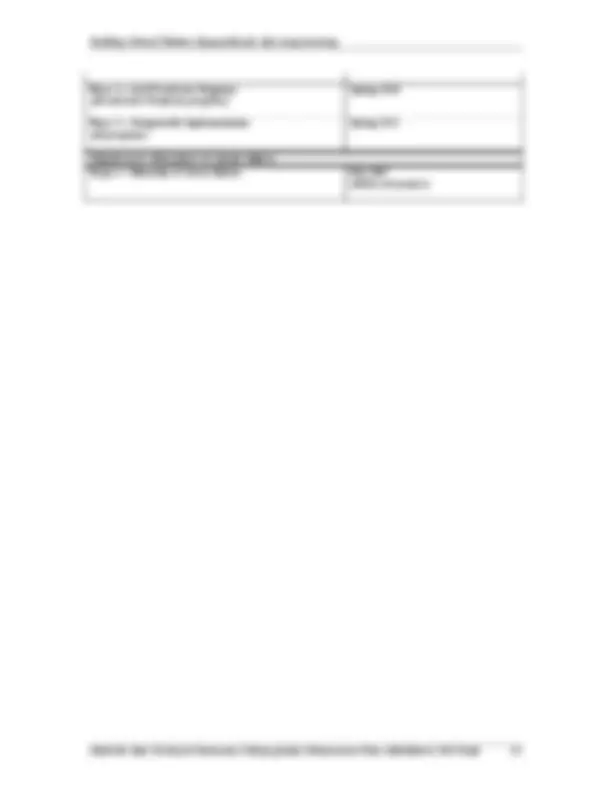
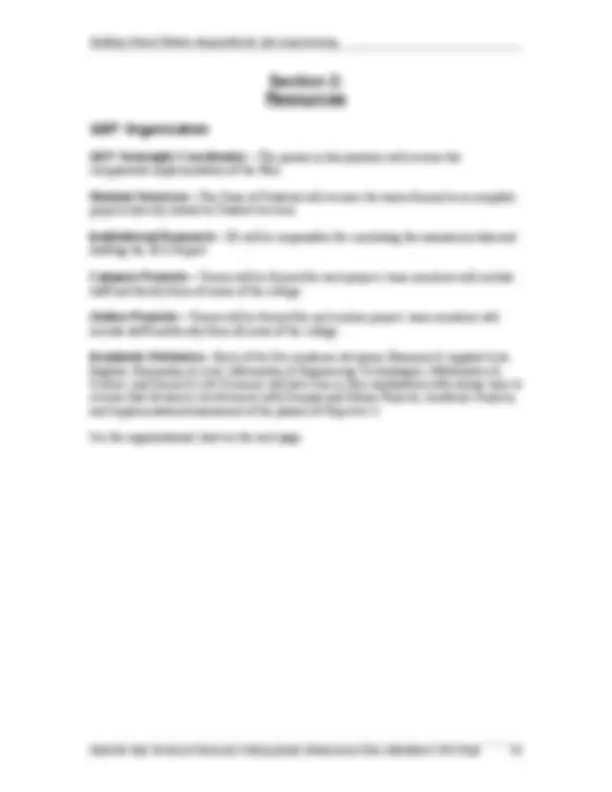
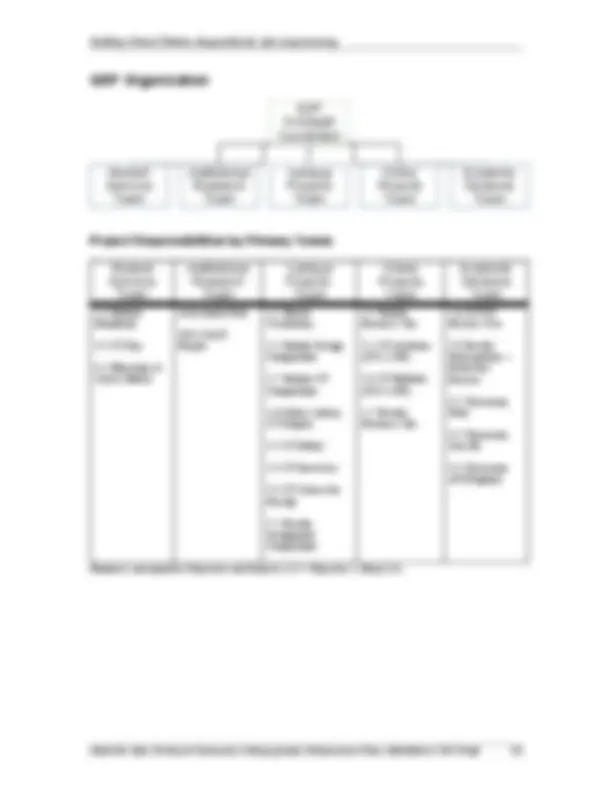
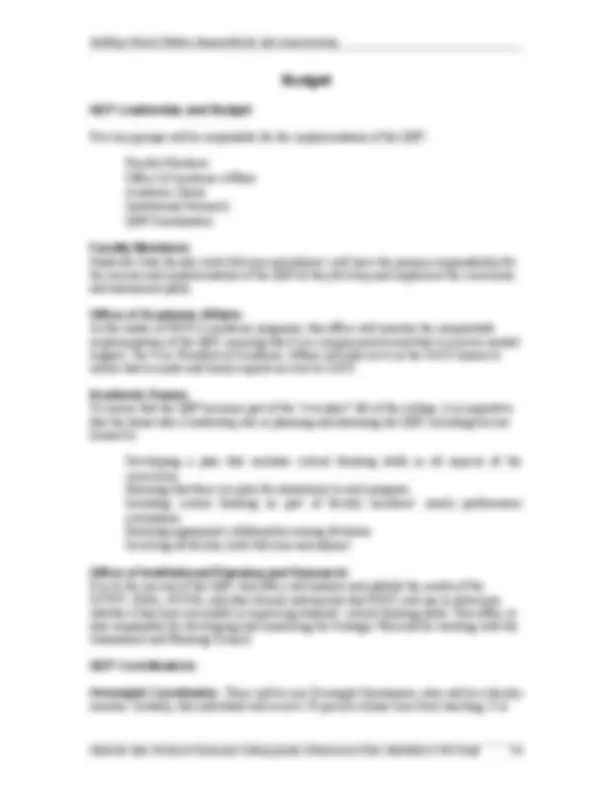
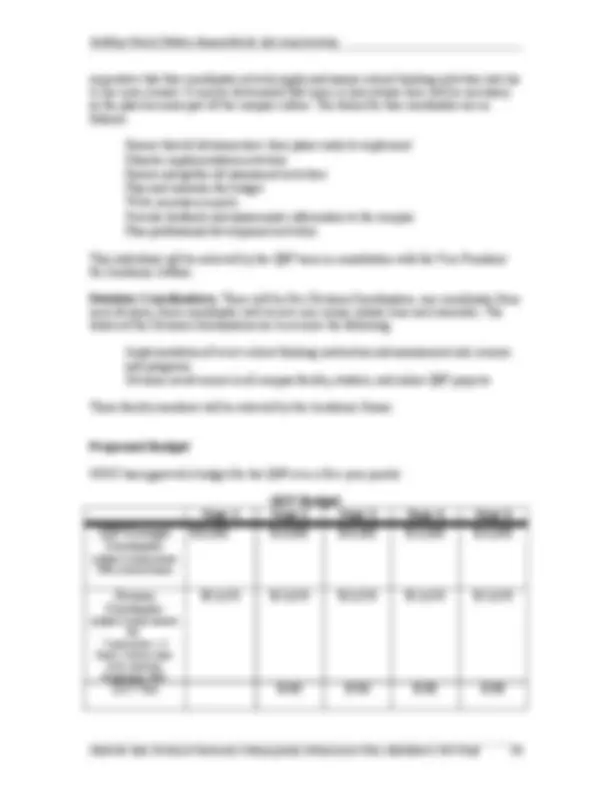
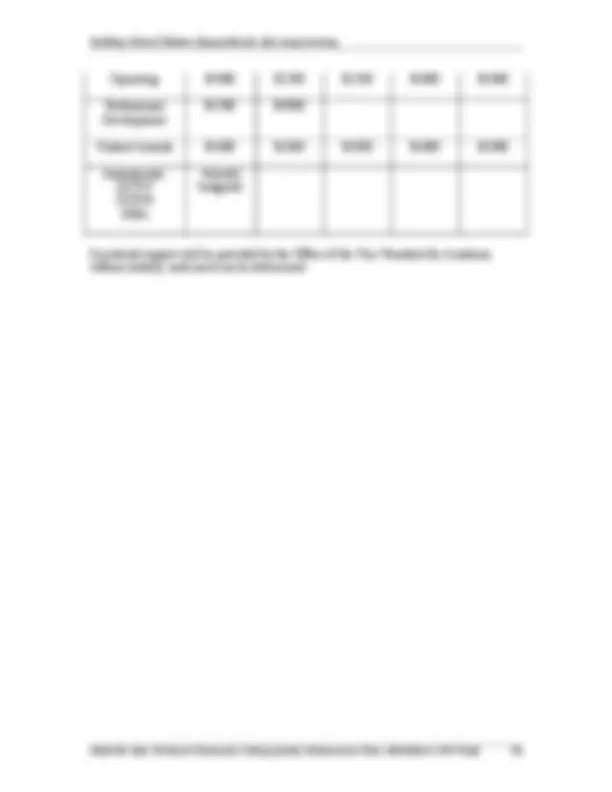
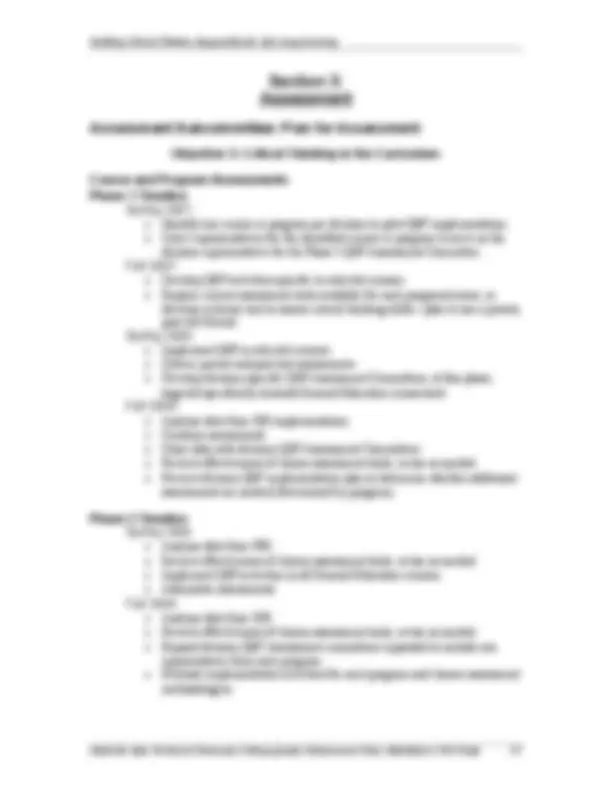
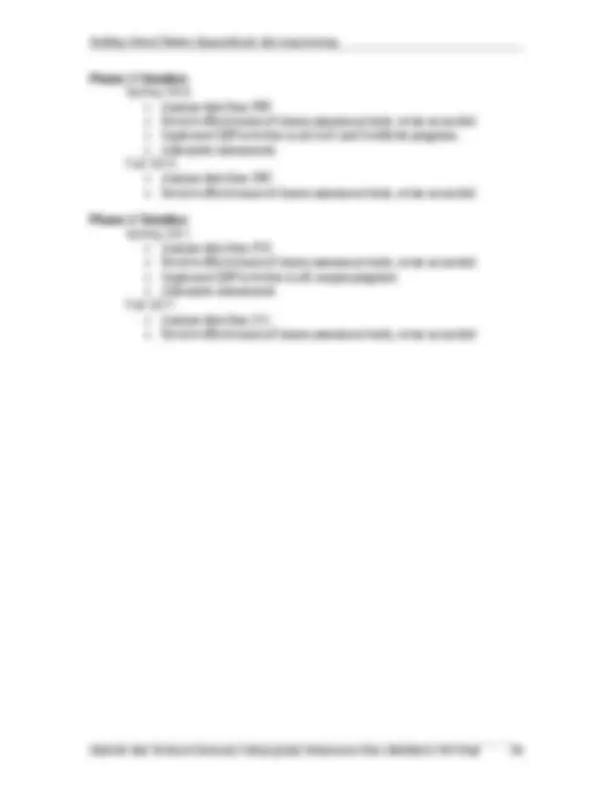
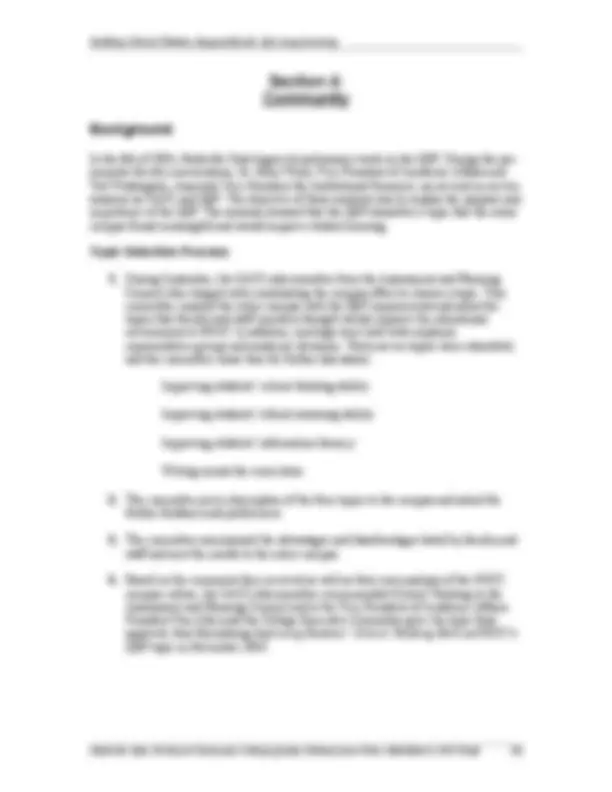
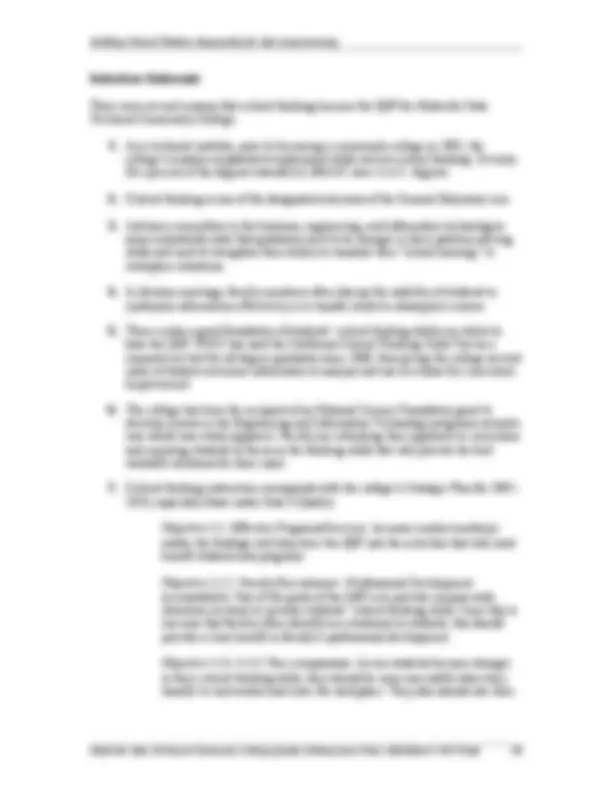
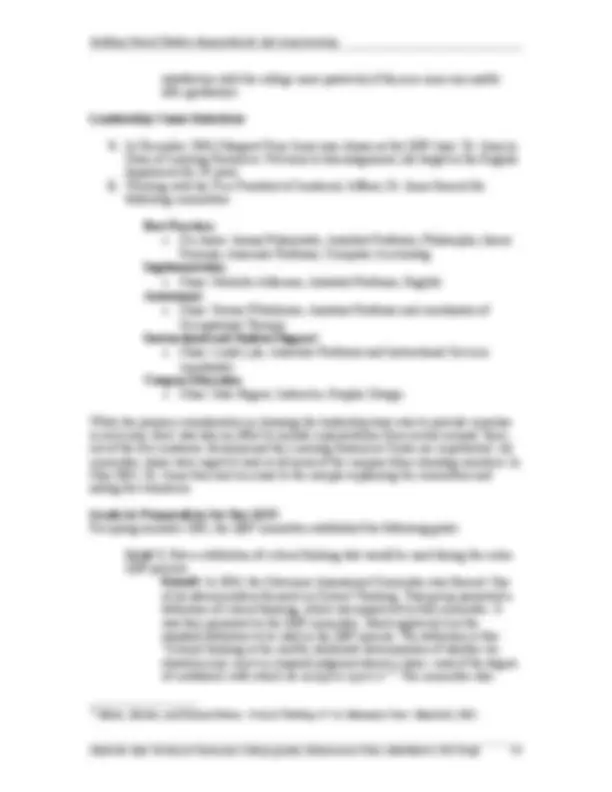
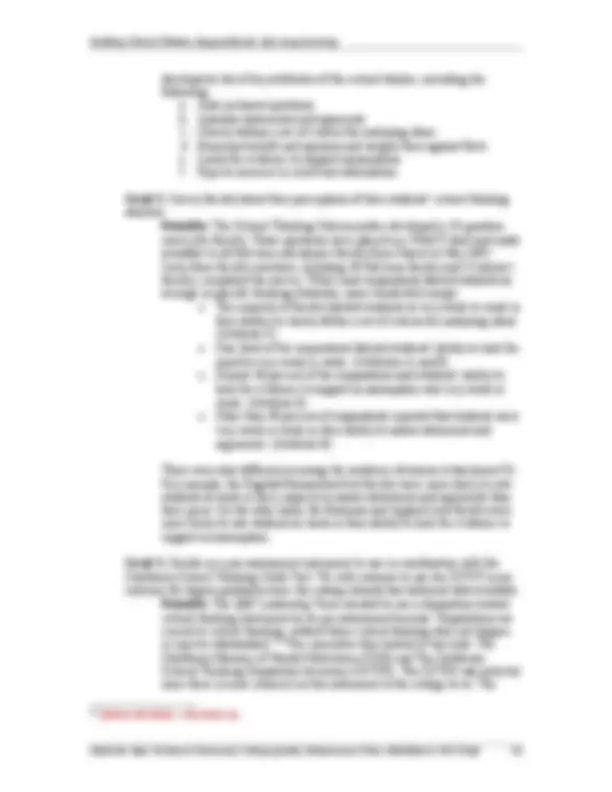
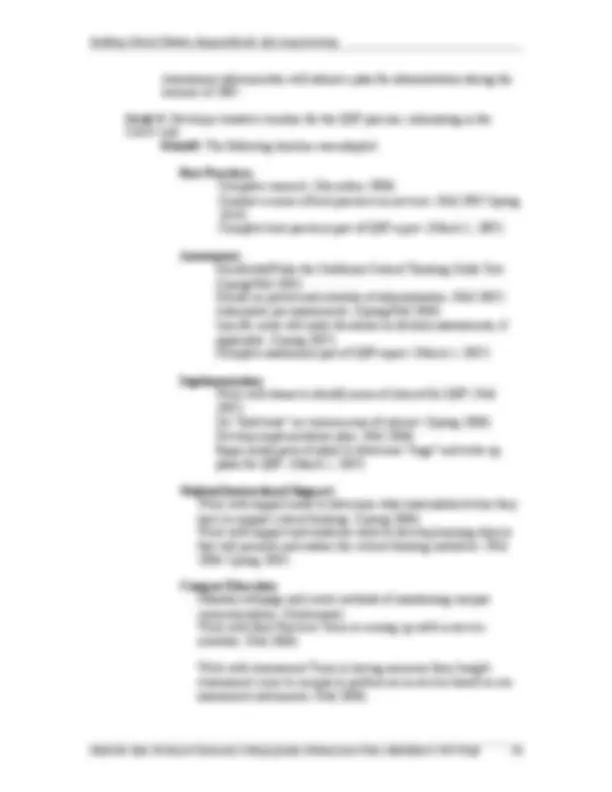
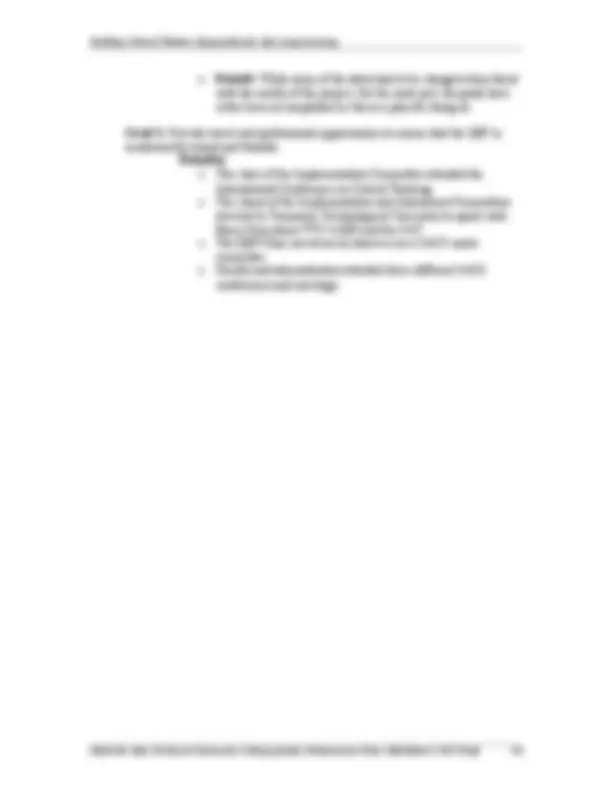
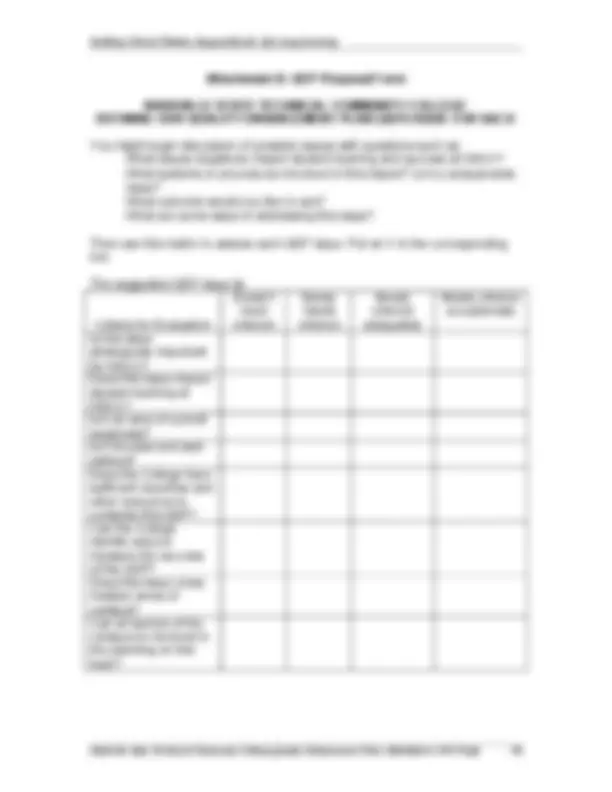
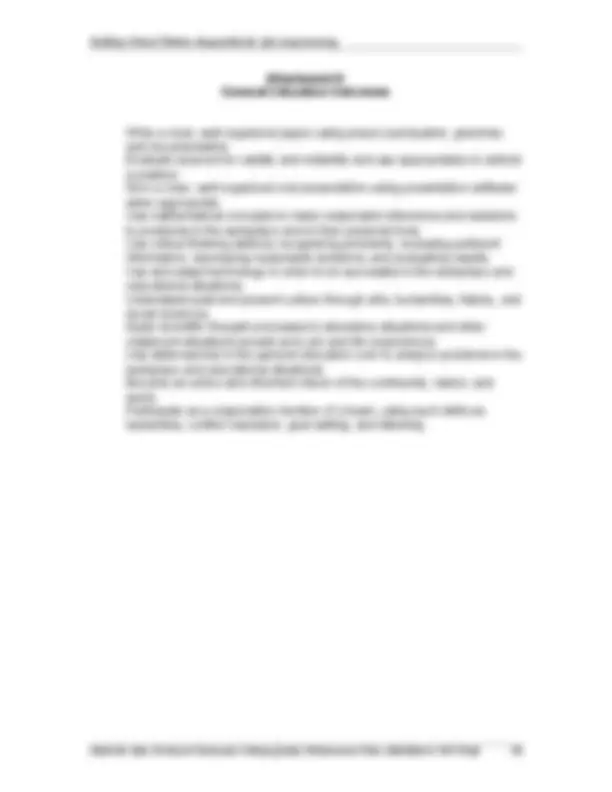
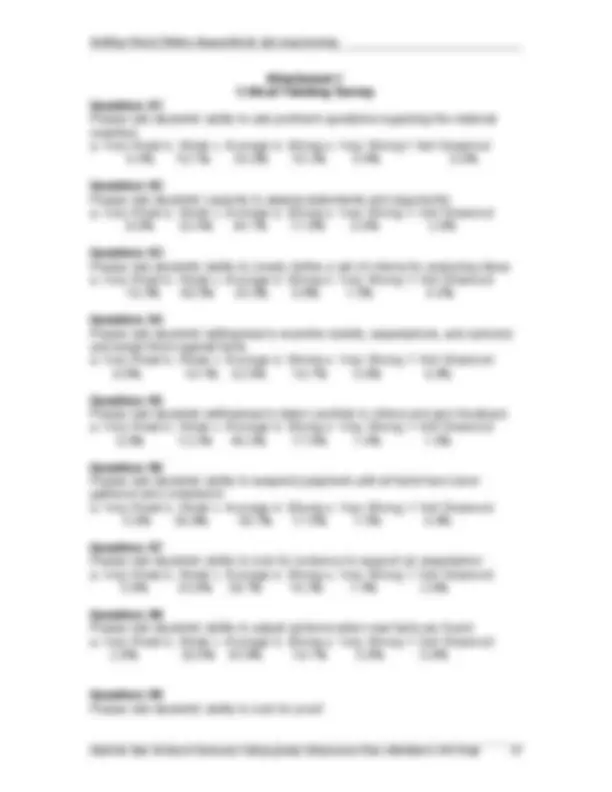
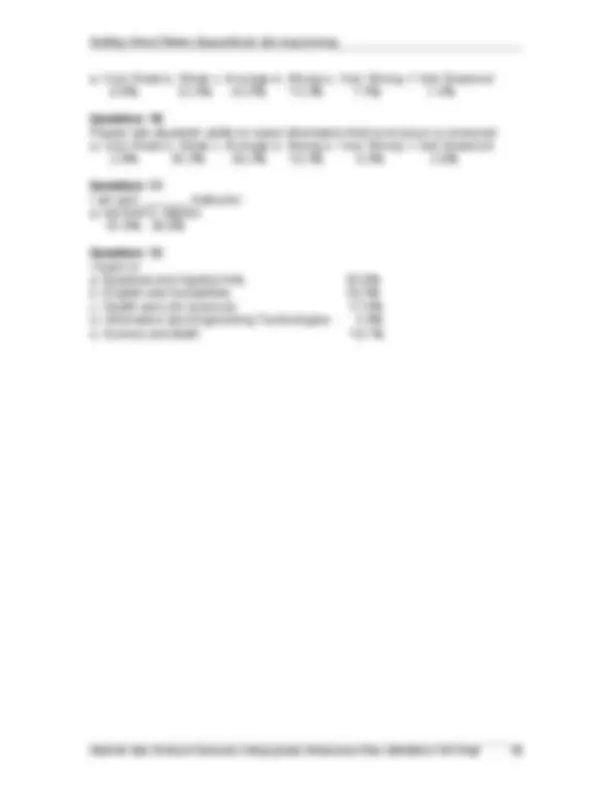
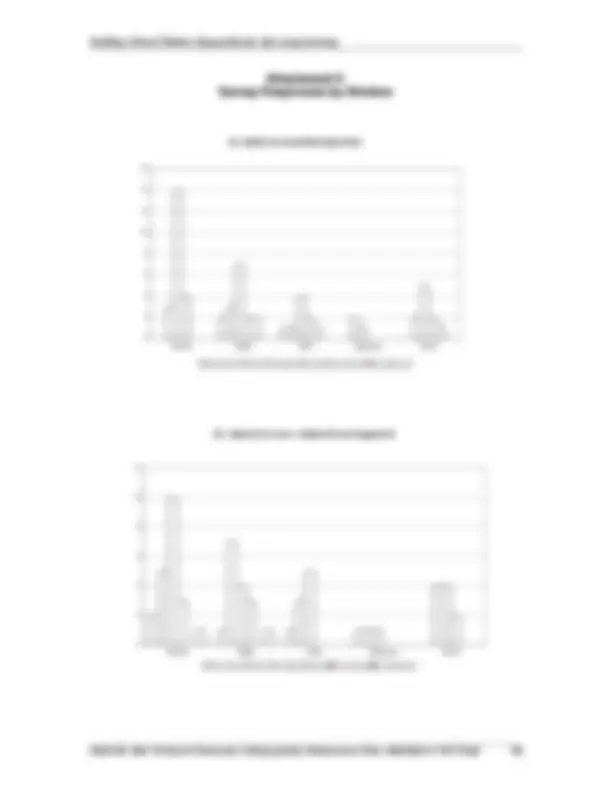
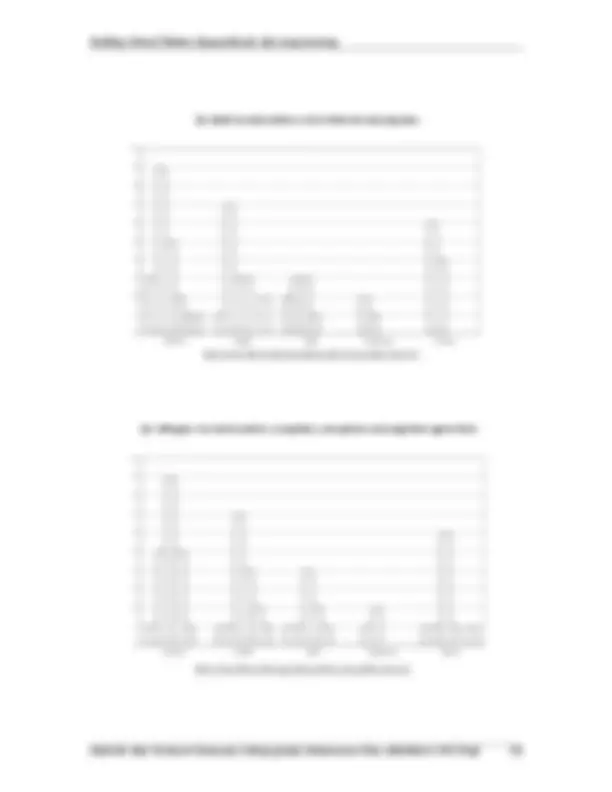
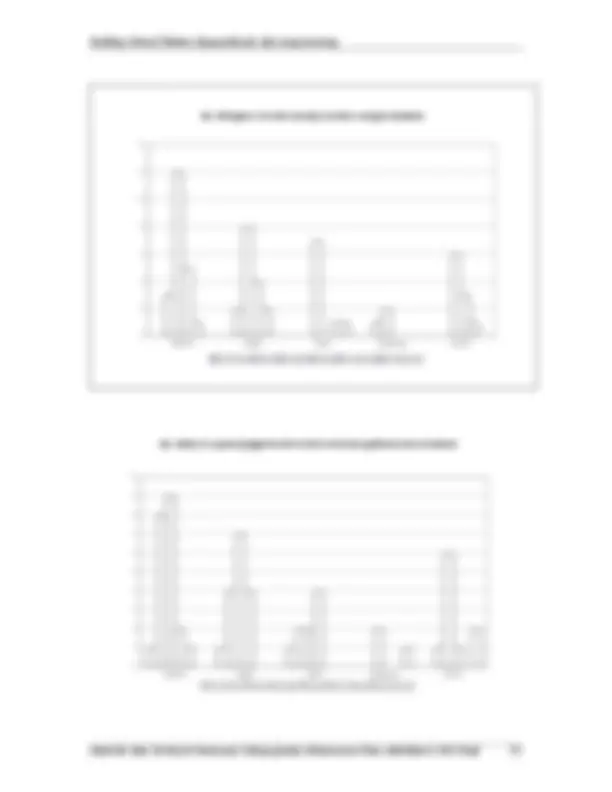
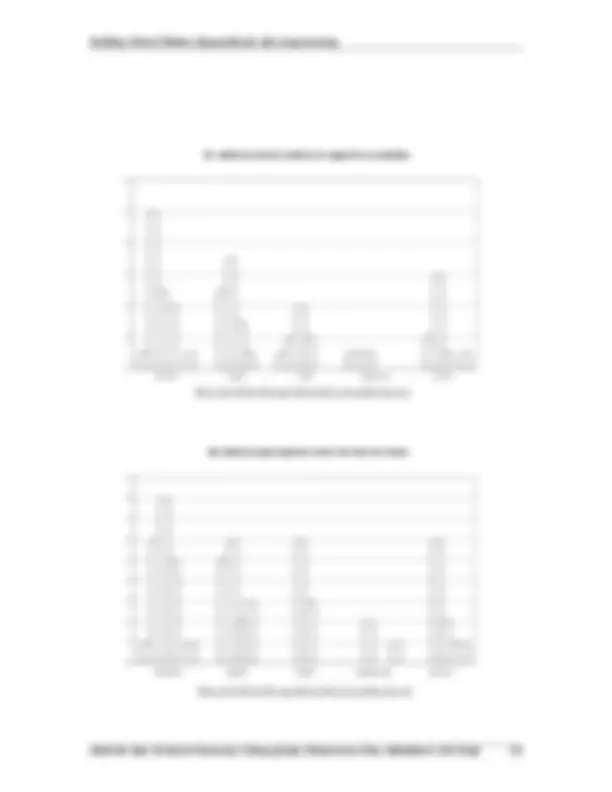
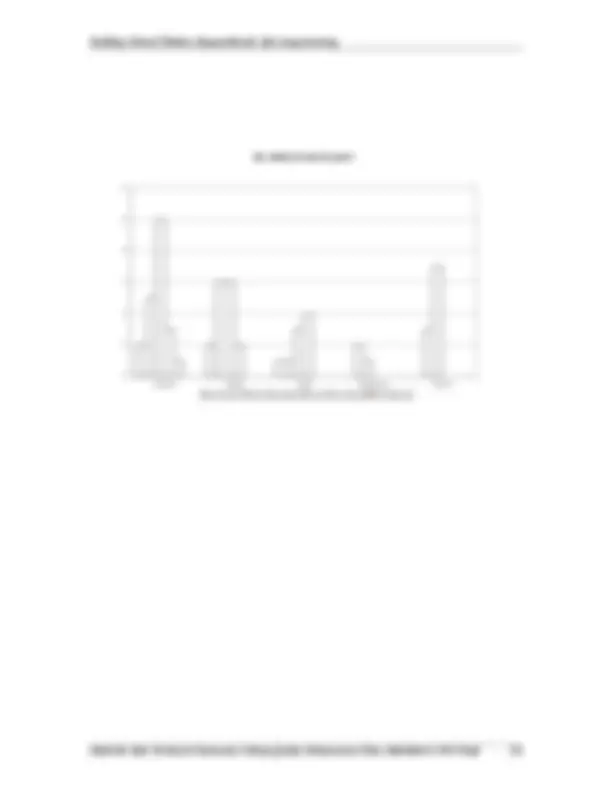
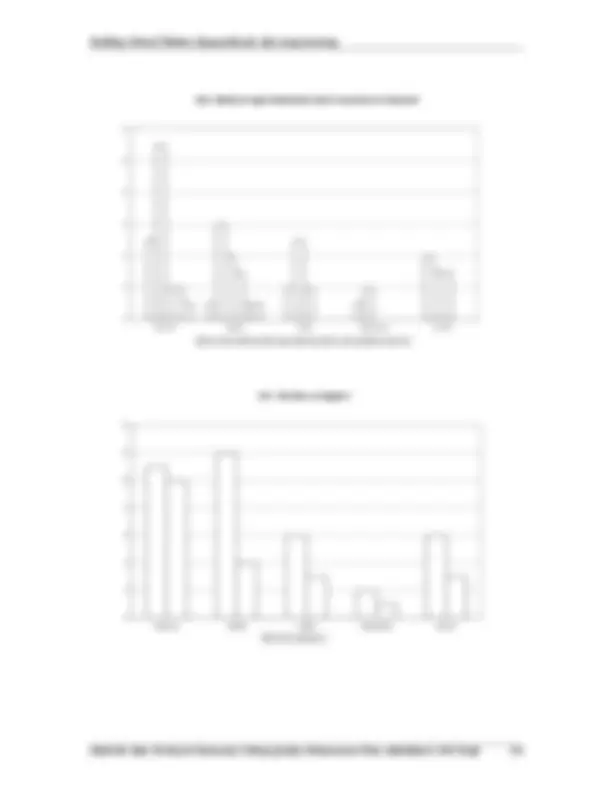


Study with the several resources on Docsity

Earn points by helping other students or get them with a premium plan


Prepare for your exams
Study with the several resources on Docsity

Earn points to download
Earn points by helping other students or get them with a premium plan
Community
Ask the community for help and clear up your study doubts
Discover the best universities in your country according to Docsity users
Free resources
Download our free guides on studying techniques, anxiety management strategies, and thesis advice from Docsity tutors
Nashville state technical community college's quality enhancement plan (qep) aimed at enhancing students' critical thinking skills. The plan includes four student learning objectives: campus environment, faculty professional development, critical thinking in the curriculum, and education & career matrix. The college intends to create a shared vocabulary campus-wide about critical thinking, improve faculty teaching and assessment skills, and make critical thinking an overt element of non-course-specific campus life. The document also includes proposed timelines, resources, and assessment plans.
Typology: Exams
1 / 54

This page cannot be seen from the preview
Don't miss anything!















































NSCC seeks to enhance critical thinking skills in student learning campuswide so that NSCC students are better able to make confident, sound decisions in the classroom, about their education, and throughout their lives. Draft Mid-March 2007
[To be completed on next/final draft] Section 1: Focus The Problem: Where is student learning most deficient? ........................................[pg] Current Assessments of NSCC Students Our Solution: A New NSCC Vision Terms & Definitions Best Practices Student Learning Objective 1: Campus Environment Student Learning Objective 2: Faculty Professional Development Student Learning Objective 3: Critical Thinking in the Curriculum Student Learning Objective 4: Education & Career Matrix Proposed Timeline for Project Implementation Section 2: Resources QEP Organization Budget Section 3: Assessment Objective 3 Assessment Plan Section 4: Community Background Attachment A: QEP Proposal Form Attachment B: General Education Outcomes Attachment C: Critical Thinking Survey Attachment D: Survey Responses by Division Attachment E: Best Practices Citations
Individual Development and Educational Assessment (IDEA) Objectives Beginning Fall 2006, IDEA is the survey used by students to evaluate each course. Faculty Selections. At the beginning of the semester, faculty select from 12 student learning outcome objectives a few (three to five is the suggested number) that they consider to be Essential or Important. Table A presents the percentage by which our faculty rank those IDEA objectives most closely related to critical thinking as either Essential or Important on the IDEA survey. Table A: Faculty Selections of IDEA Objectives Critical Thinking Learning Objectives: NSCC Faculty % Selecting as Important or Essential Fall 2006 / Spr 2007 National Faculty % Selecting as Important or Essential Fall 2006 / Spr 2007
Information is available on the IDEA website at http://www.idea.ksu.edu/. Community College Survey of Student Engagement (CCSSE) Approximately 720 NSCC students participated in CCSSE for the first time in Spring 2005. This survey includes five items that relate to critical thinking. Table C provides the responses of NSCC students on the critical thinking items compared to responses of students at 389 community colleges. Table C: Student Perceptions of Course Content for NSCC and National CCSSE Database Academic Challenge
5. During the current school year, how much has your coursework at this college emphasized the following mental activities: (1=Very Little, 2=Some, 3=Quite a Bit, 4=Very Much) NSCC Mean 2005 / 2006 Medium Colleges Mean 2005 / 2006 b. Analyzing the basic elements of an idea, experience, or theory
c. Synthesizing or organizing ideas, information, or experiences in new ways
d. Making judgments about the value or soundness of information, arguments, or methods
e. Applying theories or concepts to practical problems or in new situations
f. Using information you have read or heard to perform a new skill
Educational and Personal Growth
12. How much has your experience at this college contributed to your knowledge, skills, and personal development in the following areas: (1=Very Little, 2=Some, 3=Quite a bit, 4=Very much) e. Thinking critically and analytically 2.80 / 2.81 2.82 / 2. i. Learning effectively on your own 2.83 / 2.85 2.84 / 2. Items 5b-f are part of the larger Academic Challenge benchmark identified by CCSSE. That benchmark includes these five items on the complexity of cognitive tasks presented to students plus five items that ask about the nature and amount of assigned academic work and the standards that faculty members use to evaluate student performance. While NSCC students are close to the national average on these reports, it is clear that there is room for improvement. More information is available on the CCSSE website at www.ccsse.org.
37% rated students as “very weak” or “weak” in their ability to reject information that is incorrect or irrelevant. Furthermore, in preparation for developing and implementing the QEP, all full-time faculty took the CCTST. Janusz Polanowski, a Philosophy instructor and the developer of the online critical thinking course, held an inservice discussing the reasoning required for the different types of questions. Based on a post-test survey, faculty drew two conclusions from the experience: While they are teaching critical thinking skills in their classroom, faculty are not explicitly defining these skills. In many classes, specific critical thinking skills are not listed as major course objectives. Students had little experience taking tests such as the CCTST that relied on reasoning skills and took place within a timed format. These conclusions were reinforced when students completed an exit survey after taking the CCTST. Most students rated their programs highly in helping them to think critically, but as shown on Table E, few saw a connection between their programs and the questions on the CCTST: Table E: Exit Exam Survey Total (in percentages) (226 people surveyed) Questions Strongly Agree Agree Neutral Disagree Strongly Disagree My program of study prepared me to do well on the California Critical Thinking Skills Test.
My program of study has improved my ability to think critically (to analyze, to evaluate, to solve problems).
As a result, NSCC planned to implement the following steps: Sample questions were placed on the Testing Center website so that students will be able to practice the format. By providing practice with sample test questions, NSCC can better determine which weaknesses are based on test-taking skills and which are due to poor critical thinking skills. There should be more reasoning types of questions on course examinations. As research points out, students should not only be able to recall specific course material, but also to analyze, evaluate, and make inferences about such material. More faculty will include explicit critical thinking outcomes on their syllabi. California Critical Thinking Skills Test
NSCC degree graduates take this test as a graduation requirement. The test gives a total score and seven subscores. Table F shows the aggregate data about our graduates’ performance on this test. Table G shows the 2005 total scores by major. Table F: NSCC Student Scores on CCTST Item 2004-05 2003-04 2002-03 2001-02 2000- Number Tested 418 323 227 296 n/a NSCC Mean 15.4 15.4 15.2 15.9 15. National Mean 14.8 14.6 14.6 14.0 13. NSCC Median 15. Percentile 64% 64% 62% 67% 63% Analysis Mean (7 items) 4.3 4.4 4.3 4.3 4. Inference Mean (16 items) 6.9 7.1 6.9 7.4 6. Evaluation Mean (11 items) 4.2 3.9 4.0 4.2 3. Induction Mean (17 items) 8.9 8.8 8.8 9.3 8. Deduction Mean (17 items) 6.5 6.5 6.4 6.6 5. Table G: NSCC Student CCTST Scores by Major (Only majors with at least 10 students completing the test are included.) Major 2005 Total Score^ 2006 Total Score Architectural Engineering Technology 14.75 19. Associate of Arts 15.11 14. Associate of Science 15.40 15. Computer Accounting 13.67 13. Computer Info Systems 17.97 17. Computer Networking 17.38 16. Computer Technology 13.67 14. Early Childhood Education 13.69 11. Electrical Engineering Technology 16.36 13. General Tech/Technical 15.45 16. Office Administration 13.26 12. Police Science 14.00 12. Visual Communications 16.16 13. For more information about critical thinking and the CCTST, go to www.insightassessment.com. Employer Surveys According to an April and May 2006 in-depth national survey of over 350 employers,^1 Critical Thinking / Problem Solving ranks as one of the top five applied skills “very important” to job success for new workforce entrants from community colleges (72.7%). (^1) Are They Ready to Work? is a survey conducted by The Conference Board, Partnership for 21st (^) Century Skills, Corporate Voices for Working Families, and the Society for Human Resource Management. For more information, see www.21stcenturyskills.org/documents/ReportCardFINAL_updated.pdf.
Because some of the projects^4 associated with Objective 1 directly involve students’ developing and applying their critical thinking skills, this objective addresses student learning at both the knowledge and skills levels. Student Learning Objective 2—Faculty Professional Development Help faculty, through Professional Development, hone their skills both teaching and assessing Analysis , Evaluation , Inference , and Deduction in the classroom. Through a series of projects under this objective, we intend to help faculty improve their teaching and assessment skills when it comes to Critical Thinking and Analysis , Evaluation , Inference , and Deduction ; to help faculty share their coursework strategies; and to reward faculty for developing successful approaches to the overt inclusion of critical thinking in their courses. Improving instruction and assessment—the goal of professional development—should correspond directly to improved student learning: students’ understanding about what critical thinking is (knowledge) and their developing and applying better critical thinking skills (skills). Student Learning Objective 3—Critical Thinking in the Curriculum Make Analysis , Evaluation , Inference , and Deduction explicit, overt, and assessed elements of the curriculum. One California study found that though most faculty rank critical thinking as an essential skill,^5 many not only fail to overtly teach it or explicitly include it within coursework, but also fail to assess it. Through three phases, moving from a pilot course in each academic division to all General Education Core courses and then to every program on campus, this objective seeks to make Critical Thinking—specifically, Analysis , Evaluation , Inference , and Deduction —explicit and assessed components of students’ courses campuswide. As a result, student learning should improve: Knowledge about the thinking process, as well as course content, should deepen because students are not only memorizing data but also actively putting it in context. Skills should improve as students overtly develop and apply better thinking. An emphasis on increasing student knowledge and understanding about critical thinking and on explicitly requiring students to exhibit critical thinking in the course should also result in changed behaviors and values: Students who think better should take responsibility for their thought processes and decisions, therefore making more sound decisions. (^4) The detailed plans for implementing each objective, which include a series of specific projects, begin on page XX. (^5) Paul, Richard W., Linda Elder, and Ted Bartell. California Teacher Preparation for Instruction in Critical Thinking: Research Findings and Policy Recommendations California Commission on Teacher Credentialing , Sacramento California, 1997. Dillon Beach, CA: Foundation for Critical Thinking, 1997.
Student Learning Objective 4—Education & Career Matrix Make Critical Thinking an overt element of noncourse-specific campus life, particularly the registration and advising processes, so that students are better able to make sound decisions about their education and careers. Because our focus encompasses more than student advancement in coursework, this objective is designed to address weaknesses perceived in the advising and registration processes. Although faculty advise students about their courses of study, we believe that part of student learning includes students’ taking greater responsibility for their own educational and career decisions. The project attached to this objective is to design a matrix with a series of questions that will help students think through their career goals and therefore decisions about their course of study.
These are the basic components of sound thinking; they are elements that apply to every course offered at NSCC. They are the characteristics we seek to enhance in all NSCC students across campus.
A Best Practices Committee was established in 2004; its charge was to examine the literature involving critical thinking and then summarize the best practices for teaching critical thinking at the community college. A report from the committee and an annotated bibliography of the most useful resources are available at the NSCC QEP website (http://ww2.nscc.edu/qep/). The Implementation Committee then used these resources to develop an action plan for teaching critical thinking across the NSCC curriculum. There is no shortage of literature on the topic of critical thinking, illustrating its stated importance in higher education. As M. Neil Brown and Michael Meuti^7 point out, however, “Critical thinking is perhaps the most oft-cited post-secondary learning objective, although common classroom practice belies its importance.” There are several possible reasons why critical thinking often proves so difficult to implement on a campus. First, there are many definitions of critical thinking. While most of these definitions have key similarities, they often focus on different aspects of critical thinking, which can make a clear policy hard to implement. In fact, an initial step in establishing a critical thinking program is to agree upon an operational definition. Second, a campus-wide commitment to critical thinking instruction often means a major shift in the way that faculty think about, plan for, and teach their courses. This may be perceived as an extra burden to the typical community college faculty who may be teaching five classes as well as advising, serving on committees, and performing departmental duties. Therefore, there may be faculty resistance to such a change.^8 Still, there is an acute need for critical thinking skills instruction in community colleges. William Peirce^9 notes that 86 percent of 8675 sophomores at two-year colleges taking the ETS Academic Profile test in 2004 scored “not proficient” in critical thinking. According to Peirce, students “arrive from high school as weak critical thinkers, and they graduate from community college as weak critical thinkers.” Another ETS test, the ICT Literacy Skills Assessment, shows that many students simply do not possess the critical thinking skills required to manage the information and research tasks necessary for academic and job success. Of the 6300 students who took the ICT in 2006, only 52 percent could judge a website’s objectivity and only 44 percent could identify a research statement that covered the requirements of an assignment.^10 (^7) Brown, M. Neil, and Michael Meuti. “Teaching How to Teach Critical Thinking.” College Student Journal 33.2 (1995): 162-70. (^8) Barnes, Cynthia A. “Critical Thinking Revisited: Its Past, Present, and Future.” Critical Thinking: Unfinished Business. Ed. Christine McMahon. New Directions in Community Colleges. San Francisco: Josey-Bass, 2005. 5-13. (^9) Peirce, William. “The Year of Critical Thinking at Prince George’s Community College: An Integrated Professional Development Program.” Critical Thinking: Unfinished Business. Ed. Christine McMahon. New Directions for Community Colleges. San Francisco: Josey-Bass, 2005. 79-85. (^10) Bogan, Karen. “College Students Fall Short in Demonstrating the ICT Literacy Skills Necessary for Success in College and the Workplace.” Washington, DC: Educational Testing Service. www.ets.org/portal/site/ets/menuitem.c988ba0e5dd572bada20bcr7c3921509?vgnex. Accessed 12 Feb.
How do you know that it is viable?
What does it really mean?^15 For Myers, “Students will learn to think critically when faculty challenge learners about what they think they believe.”^16 Asking essential questions is one of the critical thinking competency standards developed by Paul and Elder^17. The two also recommend systematically questioning students using the Socratic method.^18 E. Instructors should model critical thinking in their classrooms. As Paul and Elder point out, most students come to college “unaware of what highly skilled thinking looks like.”^19 Even in classes that have emphasized critical thinking, often the modeling has been implicit. Paul and Elder emphasize that this modeling needs to be explicit, with the instructor thinking aloud with the students and also calling attention to the actual thinking processes being used. F. Critical thinking must be assessed in the classroom. There needs to be a clear way to tell if students’ critical thinking skills are improving. If students find that their grades come from other factors, then they will be less likely to take critical thinking seriously, despite what the instructor says. Noreen and Peter Facione^20 stress that critical thinking assessment should be multifaceted and include both skills, such as analysis and evaluation, and habits of mind, such as inquisitiveness and courage of thought. Much of the research points to using rubrics as an effective way of assessing critical thinking skills. Dannelle Stevens and Antonia Levi^21 note several of the advantages of using rubrics:
They speed up the grading process, a concern for faculty as they move from objective tests to assessments that more accurately evaluate critical thinking.
Discussion of the rubric before grading allows students to see explicitly the critical thinking components required and assessed for the project.
Rubrics also provide timely and necessary feedback that students need to evaluate and improve their own work. G. Faculty must be trained in order to teach critical thinking skills most effectively. As the research has repeatedly noted, many faculty do not know how to define critical thinking, nor are they sure how to teach it to their students. Therefore, any program that hopes to make critical thinking a key element of its (^15) Qtd. in Barnes ( see note 8). (^16) Id. (^17) Paul, Richard, and Linda Elder. A Guide for Educators to Critical Thinking Competency Standards: Standards, Principles, Performance Indicators, and Outcomes With a Critical Thinking Master Rubric. Foundation for Critical Thinking. 2005. (^18) See note 14. (^19) Id. (^20) Facione, Noreen, and Peter Facione. “Assessment Design for Evaluating Critical Thinking in Nursing.” Holistic Nursing Practice 10.3 (1996): 41-53. (^21) Stevens, Dannelle, and Antonia Levi. Introduction to Rubrics: An Assessment Tool to Save Grading Time, Convey Effective Feedback, and Promote Student Learning. Sterling, VA: Stylus. 2005.
curriculum will need to provide professional development activities for its faculty. Almost all researchers agree that the one-shot workshop is not helpful in this endeavor. But there are models that bear results and that can be copied by the small college. Barnes delineates a ten-point plan:^22
Emphasize the four broad categories of Critical Thinking most fundamental to sound decisions: Analysis , Evaluation , Inference , and Deduction. Project 1: Shared Vocabulary As a rule, faculty believe that they are teaching critical thinking skills and that students often practice critical thinking (to varied levels of success). But students don’t always associate what they do or need to do with academic terminology. To address this tendency and to help ensure consistency campuswide, one of the first phases of the plan involves making everyone on campus aware of our working definition of critical thinking; what we intend by focusing on Analysis , Evaluation , Inference , and Deduction ; and how those skills permeate every course, educational and career decision, and real-world problem- solving. The first goal, then, is to publicize the vocabulary. Beginning in Fall 2007, student lounges, and every classroom will feature posters that include the definitions of Critical Thinking, Analysis , Evaluation , Inference , and Deduction. Distribution of posters will correspond to the publication of the new NSCC Student Handbook , which will also include these terms and definitions, along with sample questions and critical thinking quotations. Other posters may draw on those quotations and sample questions. Also, once the Student Critical Thinking Competition begins ( see Project 7 below), correct answers—along with the required narrative of the thinking process—will appear on posters in central locations (such as the Kisber Student Lobby) in order to model how those problems might be resolved. Tables in student-gathering spots (Kisber Student Lobby, for example) will be set up at varying times to offer “Goodie bags” for students that will include bookmarks with definitions of Critical Thinking, Analysis , Evaluation , Inference , and Deduction. The bags will have other treats (such as fortune cookies that include critical thinking quotes). Key here will be (1) to offer something that students perceive as valuable and (2) to set up tables at different times and places to engage daytime, evening, and weekend students. The QEP Oversight Coordinator will work with satellite campus directors to ensure that their activities correspond to those at the main campus. Finally, faculty members will be encouraged to add the definitions of Critical Thinking, Analysis , Evaluation , Inference , and Deduction to course syllabi so that these components of the class are discussed the first week of the course, along with the course outcomes, objectives, and policies.
Project 2: Student Design Competitions In order to involve students in this process as a learning and critical thinking exercise and to take advantage of our existing resources, we will sponsor a series of student competitions: Design the poster that defines Critical Thinking, Analysis , Evaluation , Inference , and Deduction in an engaging way Create cartoon characters that represent Susan Wolcott’s scholars—“Confused Fact-Finder,” “Biased Jumper,” “Perpetual Analyzer,” “Pragmatic Performer,” and “Strategic Re-visioner.”^25 The focus here will be to create characters that show the existing tendencies and potentials Wolcott describes and that depict a movement toward better thinking but that do not demean or stereotype anyone. These character designs should offer a funny, positive approach to academic achievement. Students should see these scholars as representing goals in their own thinking processes. Design t-shirts that depict the QEP and critical thinking. Design buttons that define Analysis , Evaluation , Inference , or Deduction. Suggest a better name than “Critical Thinking Day” ( see Project 4). In addition to publication, awards for winning student entries could include the following: a stipend toward tuition a bookstore gift certificate an interview published on NSCC’s homepage mention in the upcoming student catalog Project 3: Student Handbook A redesigned and value-added student handbook will be completed Spring and Summer 2007 and will be available for students online and in hard copy beginning Fall 2007. A redesign should make the handbook easier to use and increase its perceived value for students. More important, though, the handbook will include new elements that move it from the collection of policies that it is now to a resource that students will bring to the classroom. New elements will include the following: The Critical Thinking Rubric being developed this semester for use in the classroom ( see Objective 2, Project 2). Definitions and examples of Critical Thinking, specifically Analysis , Evaluation , Inference , and Deduction Boxed quotations about Critical Thinking so that the idea of critical thinking runs throughout the handbook Boxed humorous, brief examples of the types of questions students are likely to see (particularly on the California Critical Thinking Skills Test (CCTST)). (^25) See note 12.